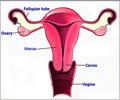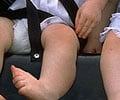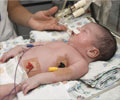Human umbilical cord patch is used to treat spinal bifida birth defect as it improves healing, reduces scars, it is effective in watertight closure, and regeneration of meningeal layer.

‘Human umbilical cord patch is used to treat spinal bifida birth defect as it improves healing, reduces scars, it is effective in watertight closure, and regeneration of meningeal layer.’
Read More..




Currently, patients are enrolled at The Fetal Center affiliated with Children’s Memorial Hermann Hospital, McGovern Medical School at UTHealth, and UT Physicians.Read More..
The study includes pregnant women whose babies have myelomeningocele, which is a neural tube defect in which the sac of fluid containing the spinal cord and nerves protrudes through an opening in the baby’s back. This condition can lead to lifelong disabilities like difficulty walking.
Ramesha Papanna, MD, MPH associate professor in the Department of Obstetrics, Gynecology and Reproductive Sciences with McGovern Medical School at UTHealth and maternal-fetal medicine specialist at UT Physicians said, “We’ve used umbilical cord patches before to close the skin when the gap was too large, but now we’re assessing whether we can use this regenerative patch to promote healing and overcome the shortcomings of the minimally invasive approach, including scar formation at the repair site, which causes further complications.”
Fetoscopic bifida repair is a minimally invasive investigational procedure using which surgeons can operate on the fetus. By using ultrasound as a guide, the surgeons make three small holes in the uterus at a distance of 3 to 4 mm from each other. Through this hole, a small camera and a surgical instrument can be inserted to close the defect.
This approach allows the mother the chance to have a vaginal birth and avoid another surgery. It also reduces the risk of uterine rupture in future pregnancies. The disadvantage of this approach is it is more difficult to achieve a watertight closure of spinal bifida as it does not allow much dexterity of the hand.
Advertisement
The researchers are investigating if this patch can prevent tethering. Tethering is the attachment of the spinal cord to scar tissue. Babies who undergo utero repair have tethering and a third of the children require surgery by age 10 for the tethered cord. Sometimes to release tethering, two to three surgeries are needed. With each surgery, children can lose functions like bladder control, mobility and walking.
To reduce scarring in burn patients, amniotic membrane is used. Amniotic membrane was also evaluated but it found to be too thin. Human umbilical cord has similar properties but is thicker and tougher.
US FDA has approved human umbilical patch for ophthalmological diseases. It improves inflammation which helps in regeneration.
In Phase I clinical trial, 15 patients have been enrolled and the success will be measured by intact repair defect, prevention of leakage of CSF, and how well the wound stays closed at the time of birth. To assess the functional outcomes, the study will follow children until 5 years of age.
Source-Medindia














